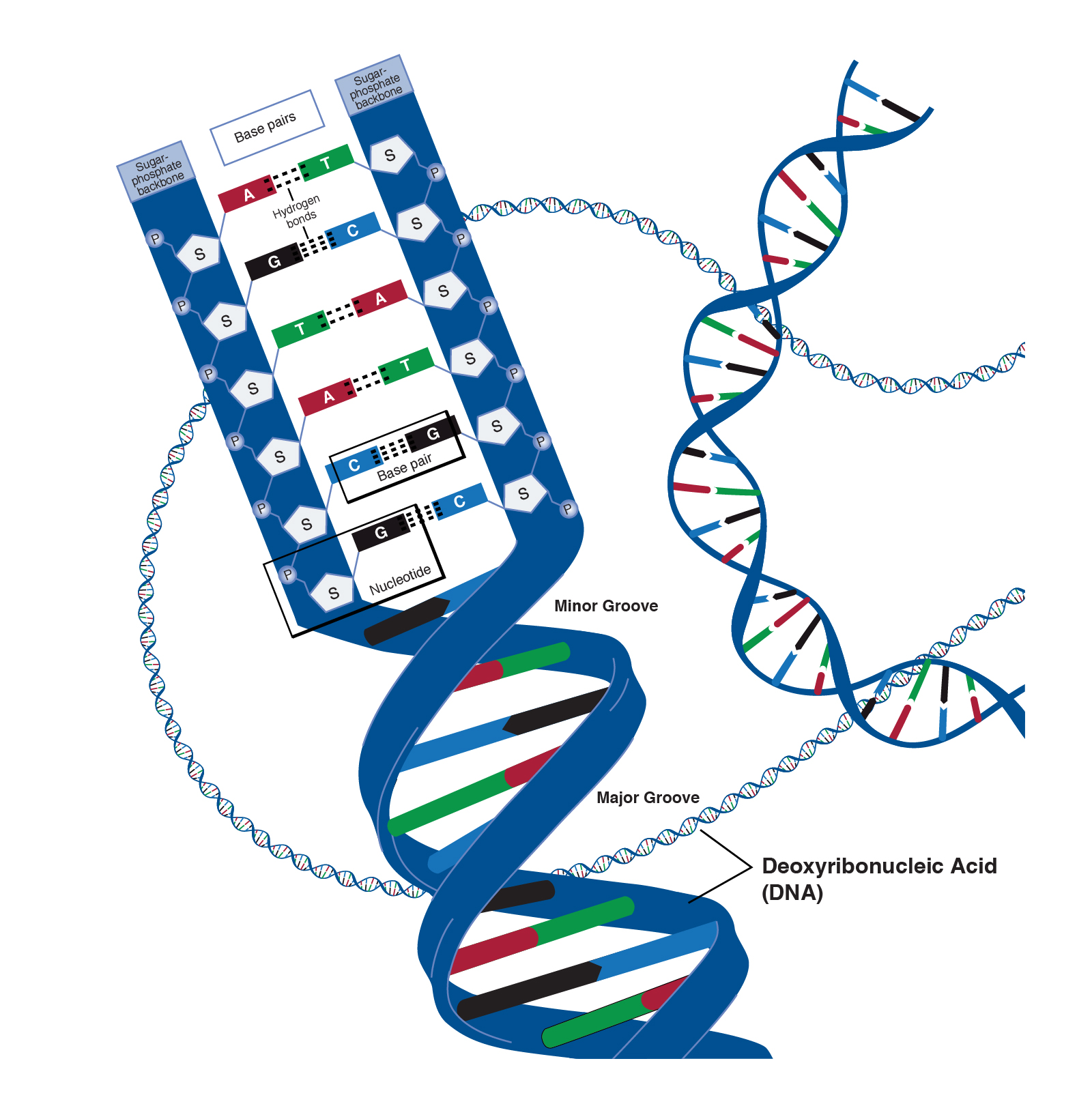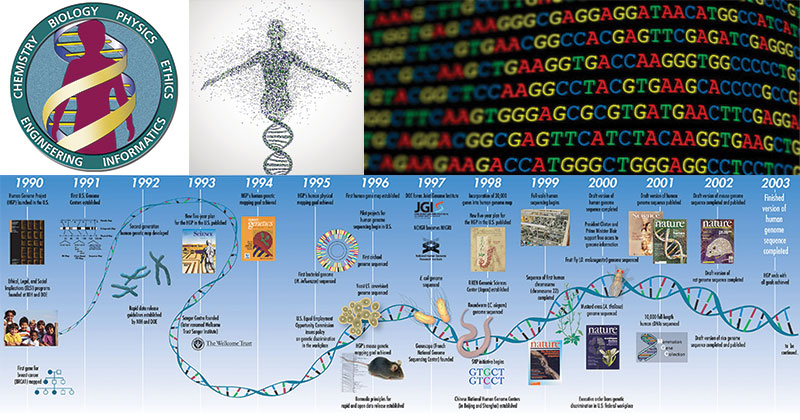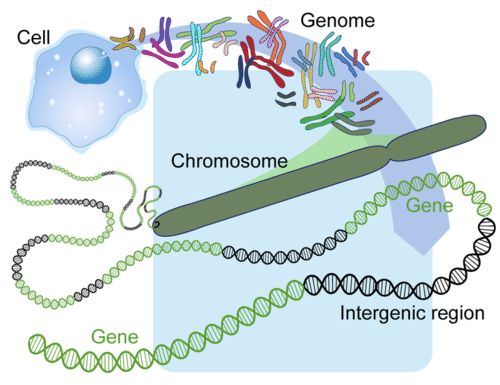Human Genome Study Guide
Introduction
When we look at the world population, we notice that every individual has a unique physical structure and behavioral pattern. If we move away from individuals and go by a blanket categorization, we will find that people have varying skin colors depending on the climatic conditions, among other shared traits.
Ancestry can dictate certain other physical attributes such as height, muscle, bone density, etc. These unique physical traits exclusive to a population residing in a particular location are due to the genetic information that has been encoded and molded over the years.
History of the Human Genome
When Charles Darwin studied evolution on the Galápagos island, he understood that untethered reproduction is crucial for a species to survive. To reproduce frequently, the species must adapt to their prevalent environmental conditions to provide for resource input.
For this reason, successful species develop unique traits and pass them to their offspring through genes! However, Darwin failed to put forth the mechanism that provides for passing these traits. Later studies of genes and chromosomes confirmed the evolution theory.
What is DNA?
DNA stands for Deoxyribonucleic acid. It contains all the genetic information related to the parent’s unique traits. This is essentially a chemical compound that dictates the behavior and activities of all living beings. If you observe the DNA molecule diagram, you will notice two strands of protein intertwined with each other.
This structure is often referred to as the double helix. Moreover, each DNA strand comprises four basic chemicals referred to as nucleotide bases. Each nucleotide base has a certain alphabetic connotation, and the order of these genetic alphabets determines the nature of information passed on.

The nucleotides bases are Adenine (A), Thymine (T), Guanine (G), and Cytosine (C). The nucleotide bases on each strand of DNA pair with one another, their bonds creating the rungs of the ladder-like structure of the double-helix. They are complementary, meaning C always pairs with G, and A always pairs with T.
The unique order of the combination determines the traits that are passed on. We can compare the combination of genetic alphabets with the combination of conventional alphabets because different combinations result in different words.
What is a genome?
In the previous section, we discussed single strands of DNA and what they entail. Every cell in a human body contains 3 billion replicas of DNA strands with their genetic alphabets. This complete set of DNA base pairs is known as the genome.
-
The four-letter language of the DNA strands contains crucial information, which makes up the entire human body.
-
A gene refers to a DNA unit that contains information for making up one of three proteins.
-
A genome contains 20000 to 25000 genes that make up the human body, and this is comprehensive definition of the human genome! Doesn’t that seem crazy?
When studying the chromosomes, you will learn that one of the chromosome segments contains genes. And, with the help of histones, the chromosome carrying DNA is packed into the nucleus of the cell. The genes facilitate the production of proteins with the assistance of messenger molecules and certain enzymes.
The function of the enzymes is to copy the information in the gene’s DNA and send it to messenger molecules. These molecules are called messenger Ribonucleic Acid or mRNA. Now, this mRNA molecule has to travel out from the nucleus into the cell’s cytoplasm. Here, the information brought by mRNA is read by tiny molecules called ribosomes.
The information is copied to assemble amino acids in that particular order to make a specific protein. Protein is a crucial building component that forms body structures like organs and tissues. It also facilitates certain chemical reactions and carries signals between cells. Terminal diseases like cancer are caused when the DNA’s information is distorted, leading to improper protein information.
What is the Human Genome Project?

Several health institutes and scientists from different countries came together to contribute to the Human Genome Project led at the National Institute of Health. The organization that led this coveted project was National Human Genome Research Institute.
The project concluded in 2003, two years ahead of schedule. Another remarkable feat was that this project was completed well within the allocated budget. The purpose was to produce a high-quality genome sequence that could be made available in the public database.
This genome sequence can be used to study the origin of genetic diseases that are caused due to DNA alteration. Institutes use this genome sequence to find the reason for cancer and the genetic mutations that lead to it. Several other birth diseases are also studied using this high-quality genome.
Other such research is also being conducted to understand the functioning of genomes and genetic mutations completely. A full-fledged understanding may lead to the cure of terminal disorders like Leukaemia and Down Syndrome.
For this research, scientists collected blood from more than a hundred donors, keeping the identity of each donor anonymous. The samples collected were more than required, so the donors wouldn’t know if their sample was used for the study.
✅ Conclusion
-
The genome was discovered in 2003 during a national genome project.
-
It contains 20000 to 25000 genes.
-
Each gene has information from a DNA molecule that is crucial for making up the human body.
-
The information for protein synthesis is carried via enzymes and mRNA.
-
The study of the genome is crucial to understanding genetically linked diseases.
FAQs
1. What does the human genome contain?
Each human genome consists of 46 DNA molecules on each of the 23 pairs of chromosomes. Chromosomes existing in pairs are identical, so only 3 billion nucleotide pairs are sequenced to gain complete information about the genome.
2. How many human genomes are there?
The human body carries around 20,000 genomes.
3. What is the human genome, and why is it important?
A human genome refers to 20000 to 25000 genes that carry crucial DNA information essential for making each of three proteins. It is important because it helps understand the mechanism of genetic mutation and gene-linked diseases.
4. Who mapped the human genome?
The human genome was mapped when sophisticated research called the National Genome Project was concluded at the National Institutes of Health in 2003.
5. Who owns the human genome?
The human genome is freely available in the public database.
We hope you enjoyed studying this lesson and learned something cool about the Human Genome! Join our Discord community to get any questions you may have answered and to engage with other students just like you! Don’t forget to download our App to experience our fun, VR classrooms – we promise, it makes studying much more fun! 😎
]]>
